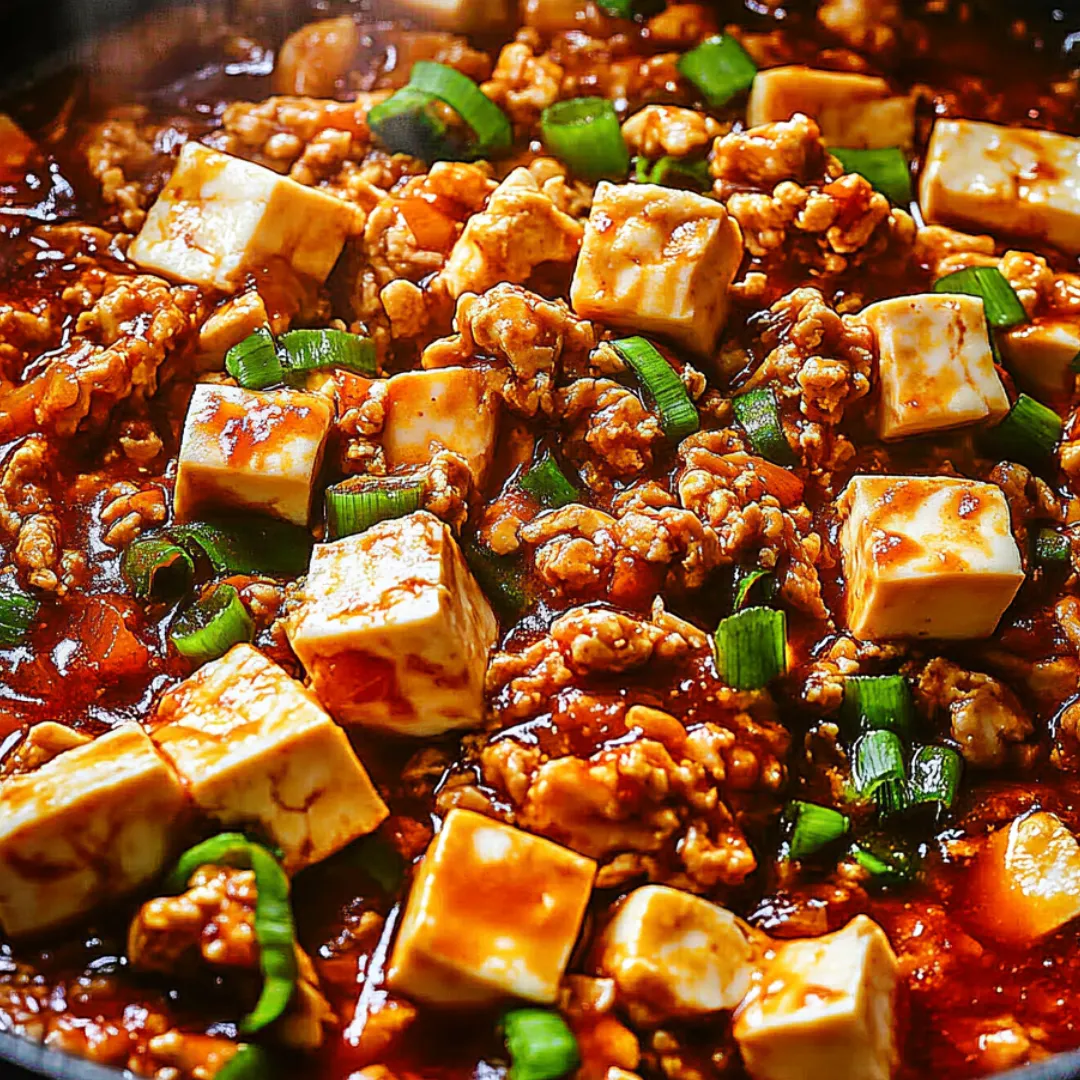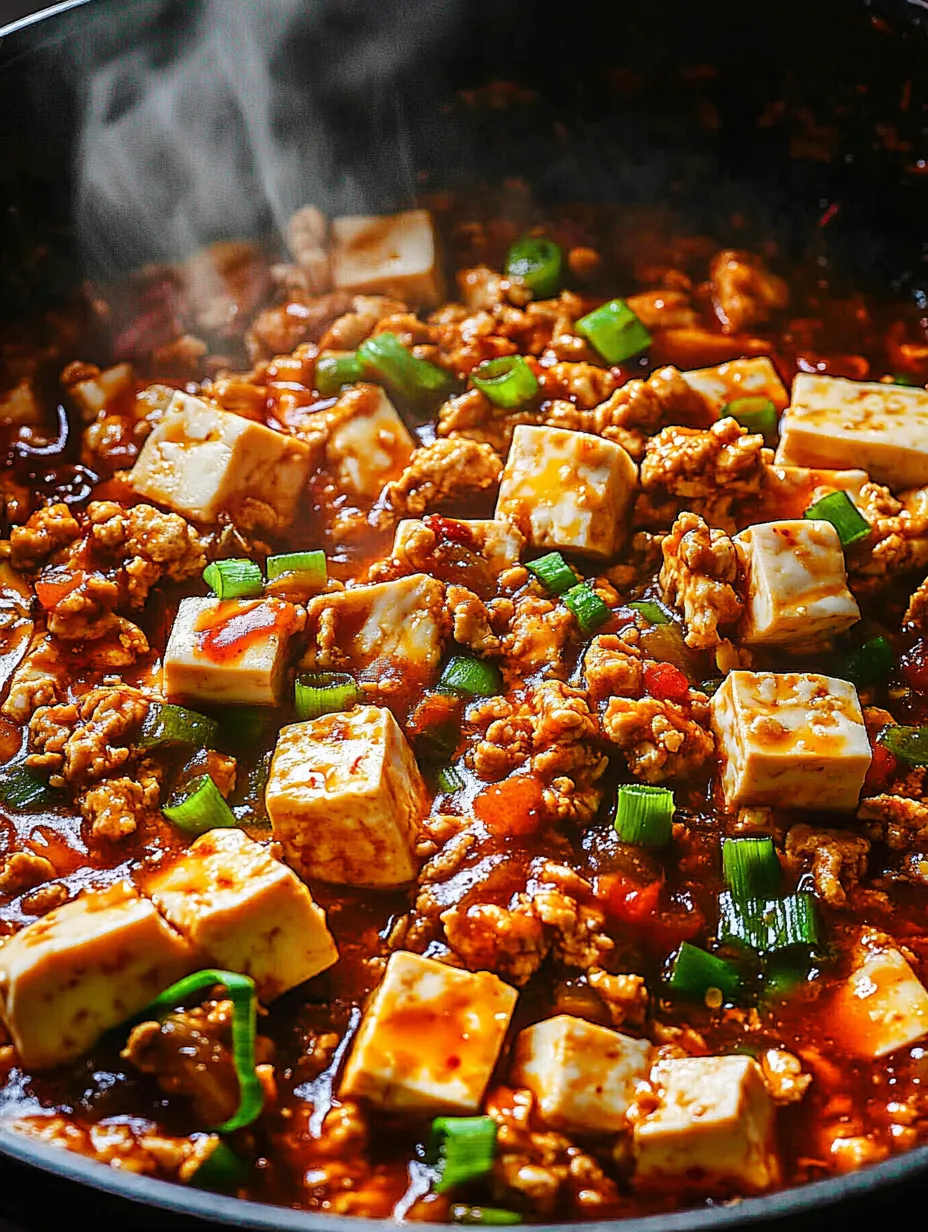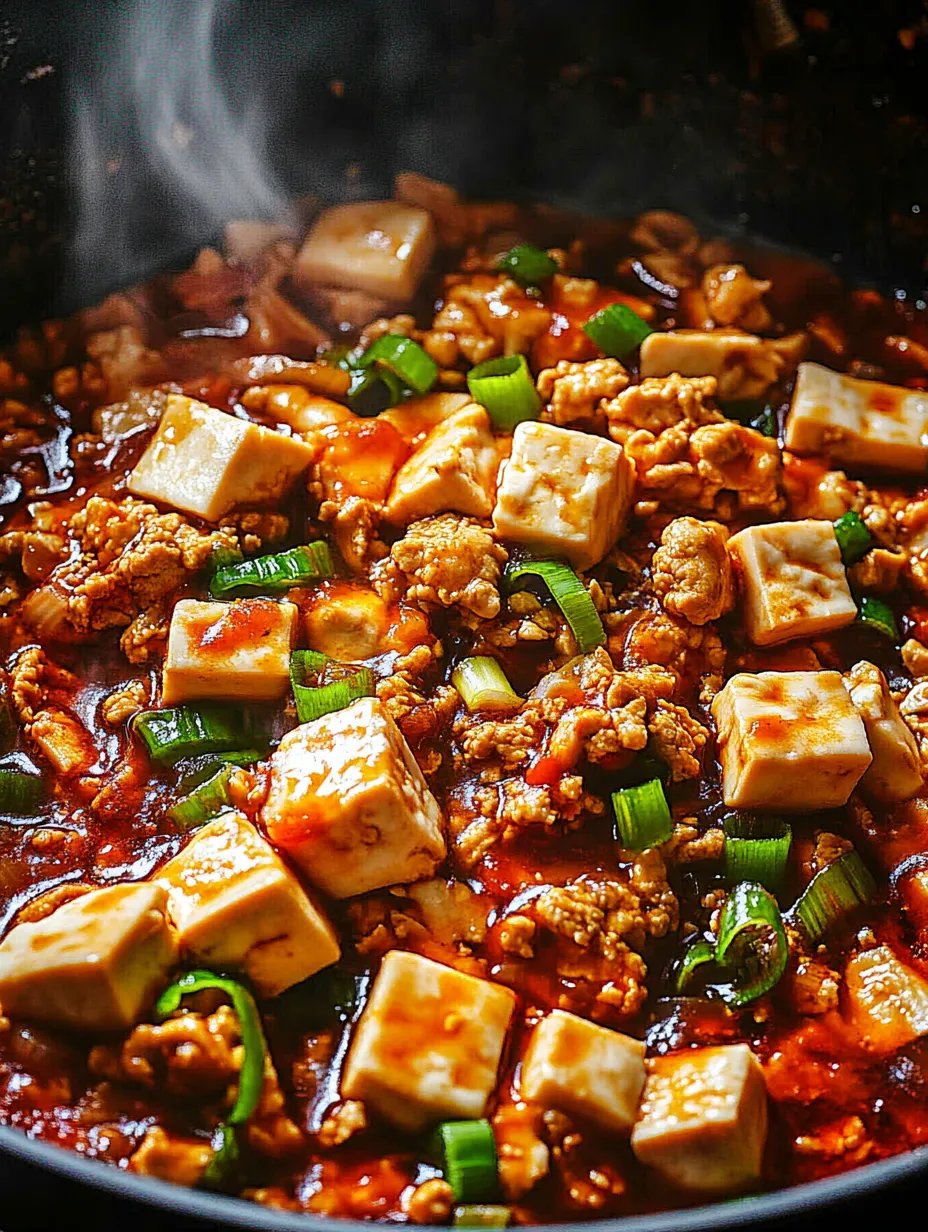 Save Pin
Save Pin
This mouthwatering mapo tofu turns basic tofu into a flavor-packed meal that beats what you'd get at most restaurants. The velvety soft tofu cooked in a thick, fiery sauce creates an amazing mix of textures and tastes that'll fix your Chinese food hunger without emptying your wallet.
I whipped this up when I was dying for real Chinese food but felt too lazy to go out. My folks weren't sure about tofu at first but now they're always asking for this dish because it's so darn tasty.
What You'll Need
- Soft tofu: Gives that smooth feel that soaks up all the tasty flavors while staying nice and tender
- Ground pork: Brings a meaty richness; go for 80/20 for the yummiest result
- Doubanjiang: Adds real depth and kick; try Asian grocery stores for the good stuff
- Sichuan peppercorns: Create that weird tingly feeling your mouth gets with true mapo tofu
- Chicken stock: Makes everything taste better than just using water for a richer sauce
- Cornstarch: Gets the sauce nice and thick so it sticks to your tofu perfectly
- Sesame oil: Adds a nutty finish that pulls everything together; toasted works best
- Scallions: Give a crisp contrast to the heavy sauce; use white and green parts differently
How To Make It
- Mix your thickener:
- Stir 1 tablespoon cornstarch with 2 tablespoons cold water in a small cup until it's smooth without any lumps. Put it aside for later when we need to thicken things up.
- Get your tofu ready:
- Cut tofu into 1-inch chunks with a sharp knife using light, careful cuts so it doesn't fall apart. Get some salted water boiling in a pot and drop in your tofu chunks. Let them sit for just 1 minute. This makes the outside a bit firmer while keeping the inside super soft. Drain carefully but don't rinse them or you'll lose flavor.
- Start the meat mixture:
- Heat up some veggie oil in a big non-stick pan until it's hot and shimmery. Throw in your ground pork and cook it for 4–5 minutes, breaking it up as you go until there's no pink left and it's starting to brown. Make sure any liquid cooks off so your meat gets more flavorful.
- Throw in the flavor bombs:
- Add your chopped garlic, ginger, and white parts of the scallions to the meat and keep stirring for half a minute until you can really smell them. Don't let the garlic burn though. Now add doubanjiang, chili oil, dark soy sauce, chicken bouillon powder, sugar, and Sichuan peppercorn if you're using them. This is where all the amazing taste comes from.
- Make it saucy:
- Pour in your chicken broth and mix everything up. Let it start bubbling gently, then pour in your cornstarch mixture while you keep stirring. Let everything bubble softly for 1–2 minutes until the sauce gets thick enough to coat a spoon nicely.
- Add in the tofu:
- Carefully put your tofu chunks into the sauce. Instead of stirring, gently scoop sauce from the bottom over the tofu so you don't break the pieces. Let it all simmer for 2 minutes so the tofu can soak up all that goodness.
- Last touches:
- Drizzle some sesame oil on top and sprinkle with the green parts of your scallions. Serve it right away with some steamed rice to soak up all that tasty sauce.
 Save Pin
Save Pin
That doubanjiang bean paste really is the heart of this dish. I tried making mapo tofu without it once and my Chinese neighbor just cracked up saying it was like making pasta without tomato sauce. Now I always keep some in my fridge and never skip it.
Picking Your Tofu
The tofu you go with really changes how your dish turns out. Old-school mapo tofu uses soft or silken tofu because it just melts in your mouth. But if you want something that doesn't fall apart so easily, medium firm tofu works great too. Whatever type you pick, just handle it super carefully while cooking. When you're shopping, grab tofu that smells fresh and doesn't have too much liquid or yellow spots which means it's getting old.
Making It Milder Or Spicier
The best thing about making your own mapo tofu is you can make it as hot or mild as you want. For a kid-friendly version or if you can't handle heat, just use 1 teaspoon of doubanjiang and skip the chili oil completely. If you're a heat freak, throw in a teaspoon of red pepper flakes or a spoonful of chili crisp at the end. Those Sichuan peppercorns don't actually make things spicy but give you that weird tingly feeling, so adjust them based on whether you like that sensation or not.
Different Ways To Make It
The traditional Sichuan way usually has beef instead of pork and includes fermented black beans for extra punch. Some areas add mushrooms for an earthy flavor or double up on doubanjiang when they want it super strong. For veggie versions, people swap out meat for finely chopped shiitake mushrooms or crumbled firm tofu that feels like ground meat when you eat it. Every family in China does it a little differently, so you can totally play around until you find your favorite way.
 Save Pin
Save Pin
What To Eat With It
Plain white rice is the classic partner for mapo tofu, but you can try brown rice if you want more nutrition or cauliflower rice if you're watching carbs. For a full meal, add some simple stir-fried veggies like bok choy or Chinese broccoli to balance out the rich, savory main dish. In lots of Chinese homes, mapo tofu is just one of many dishes all served together with cold starters, soups, and other mains so everyone can try a bit of everything.
Common Recipe Questions
- → Can I use firm tofu instead of soft tofu?
You can go with medium-firm tofu if needed, but soft tofu gives you the classic texture that makes true Mapo Tofu so good.
- → What can I use instead of ground pork?
Ground chicken or beef make great stand-ins for pork in this tasty dish.
- → How spicy is this dish?
It's got a medium kick from the doubanjiang and chili oil, but you can make it milder or hotter by tweaking these amounts.
- → Can I make this dish vegetarian?
For sure! Swap out meat for diced mushrooms or veggie ground, and use veggie broth instead of chicken stock.
- → What's the purpose of blanching tofu?
When you blanch tofu first, you get rid of that raw taste, make it a bit firmer, and it soaks up more sauce flavor.
